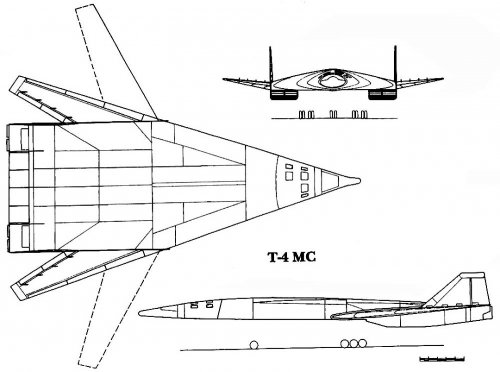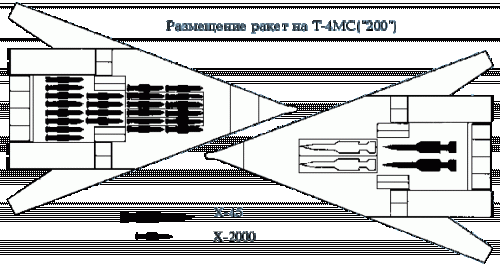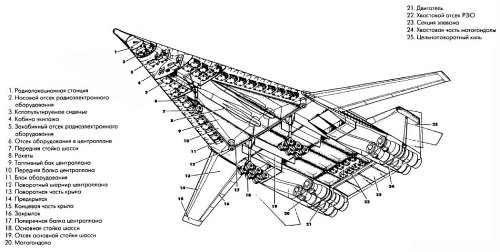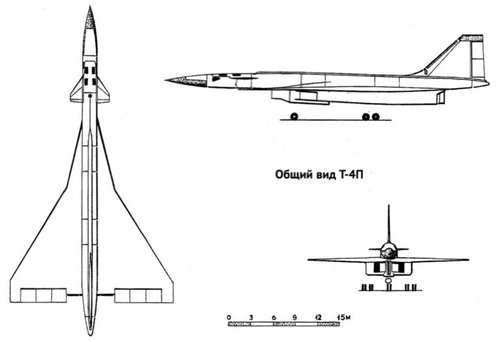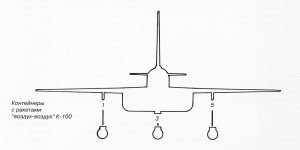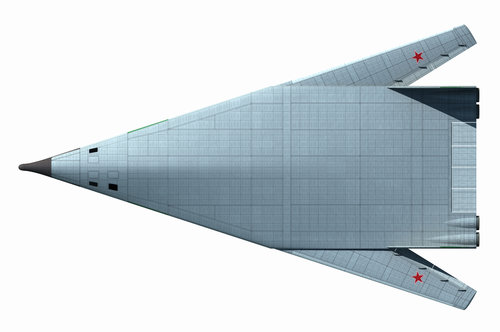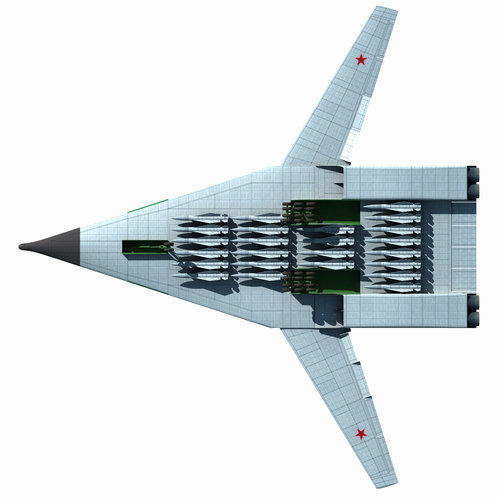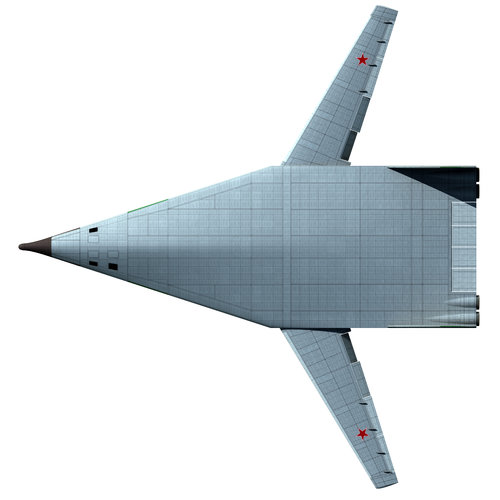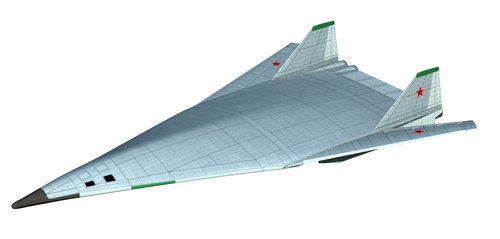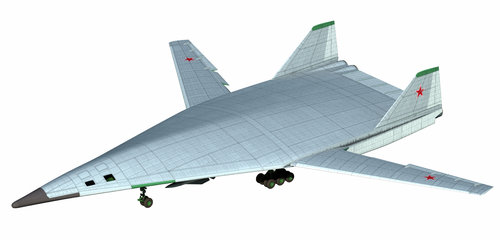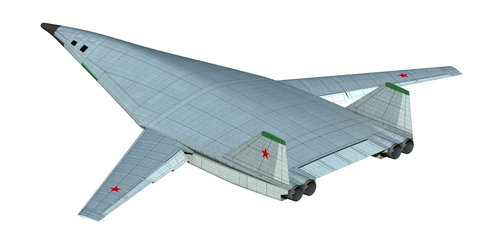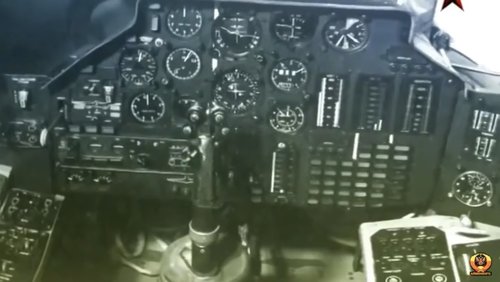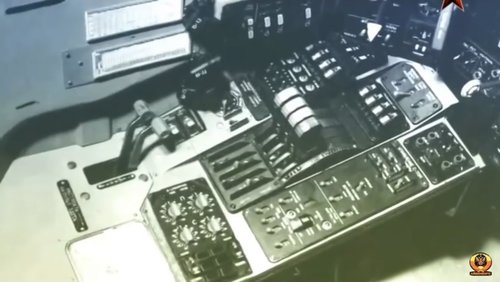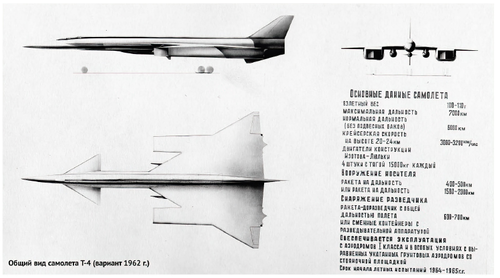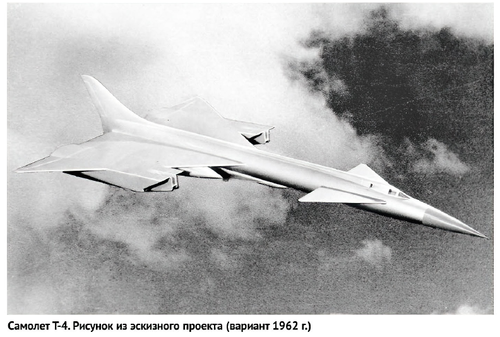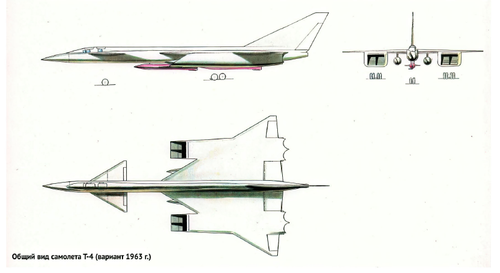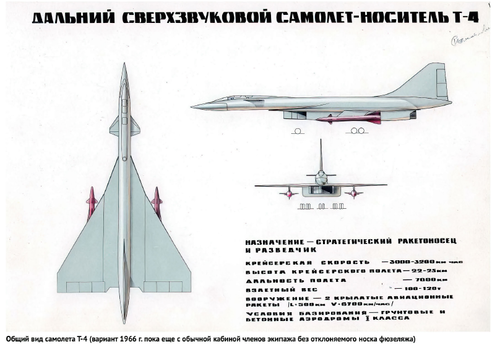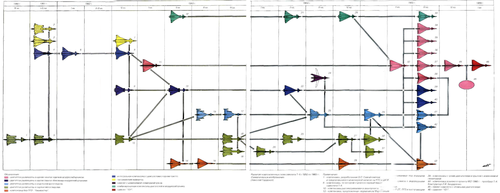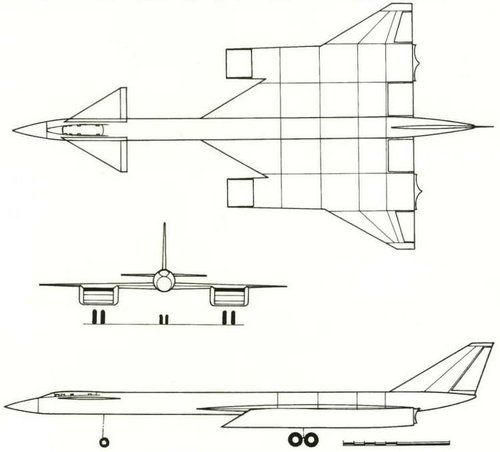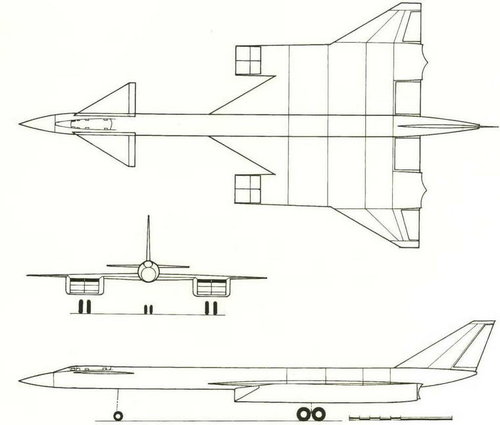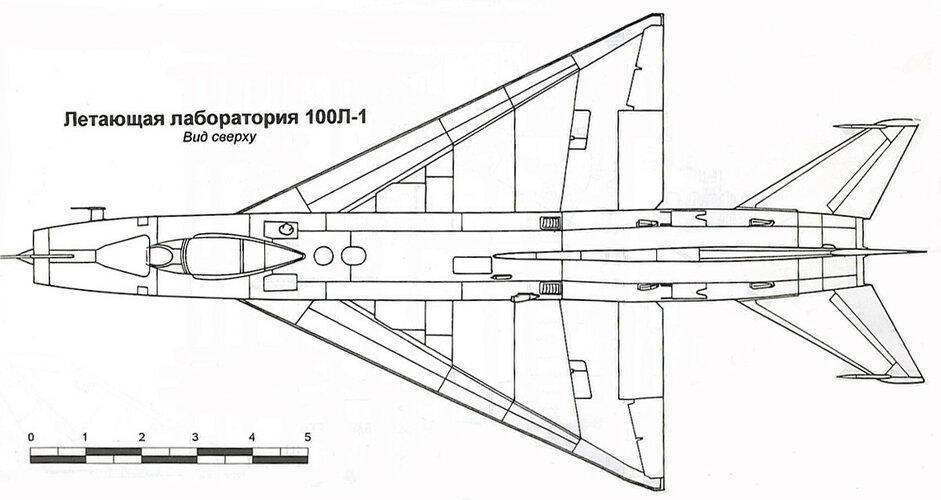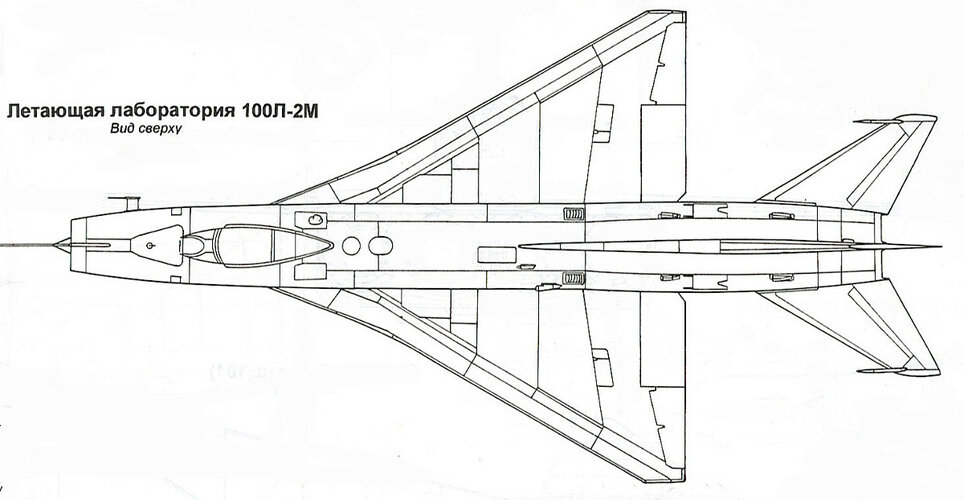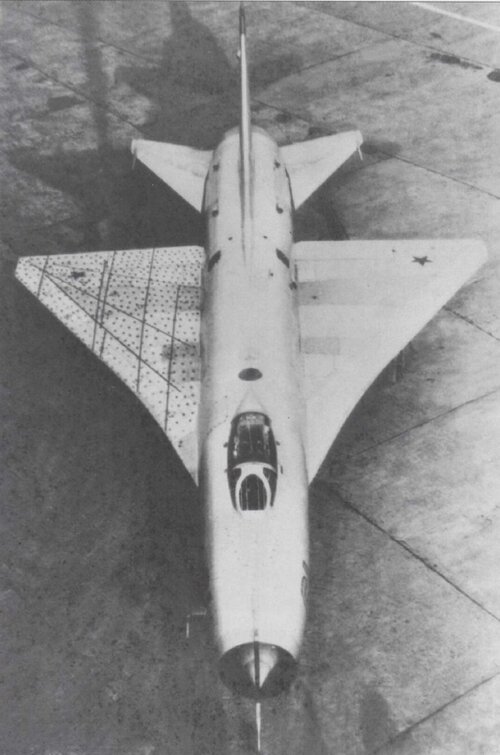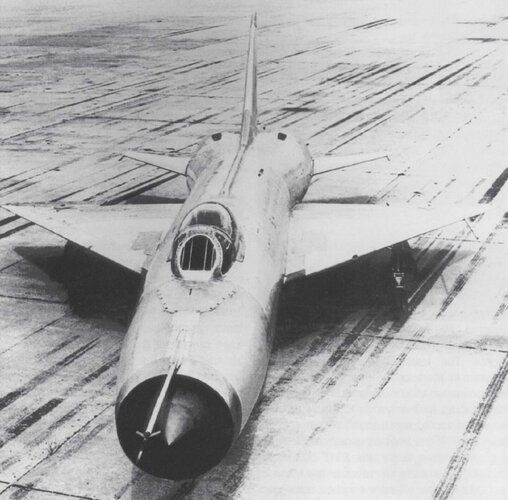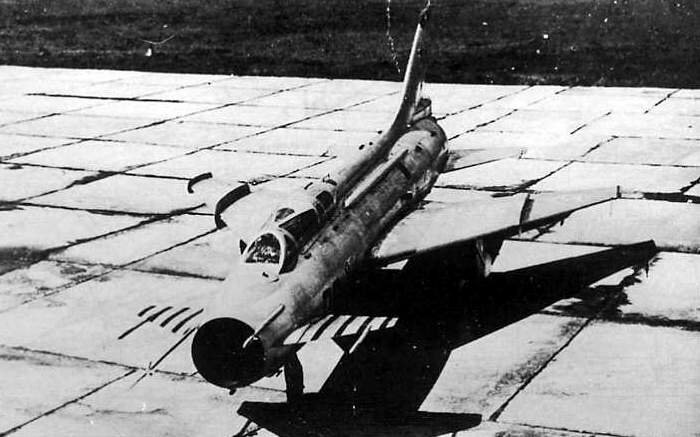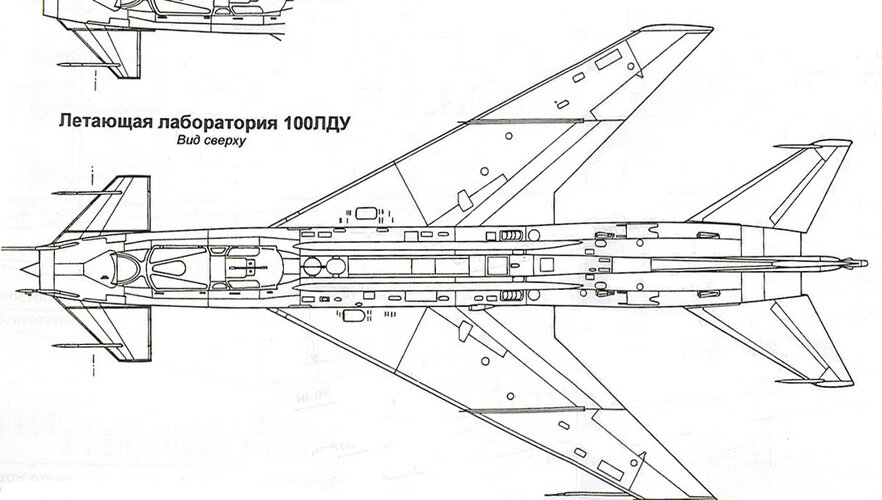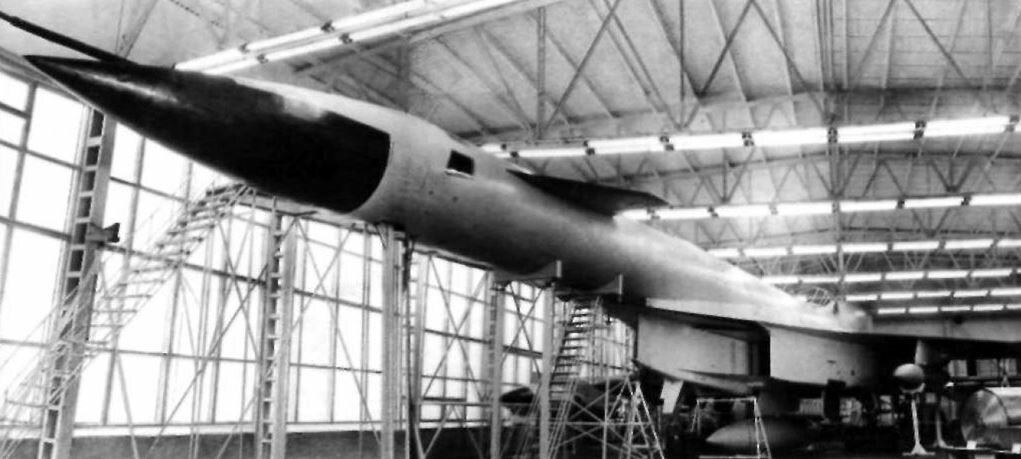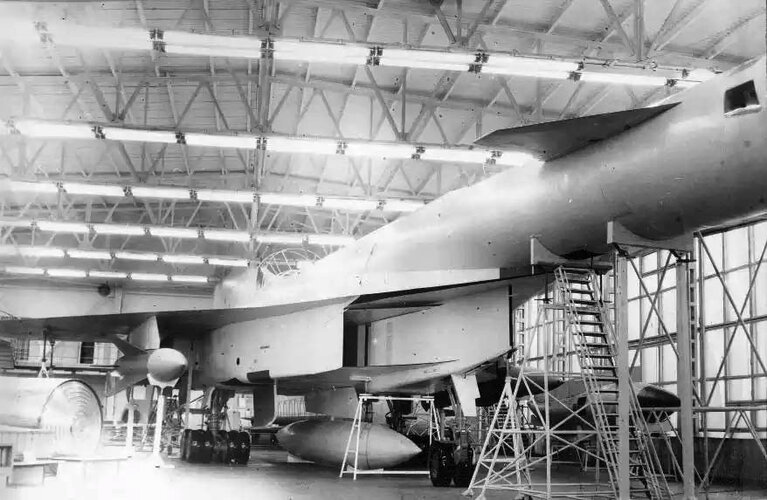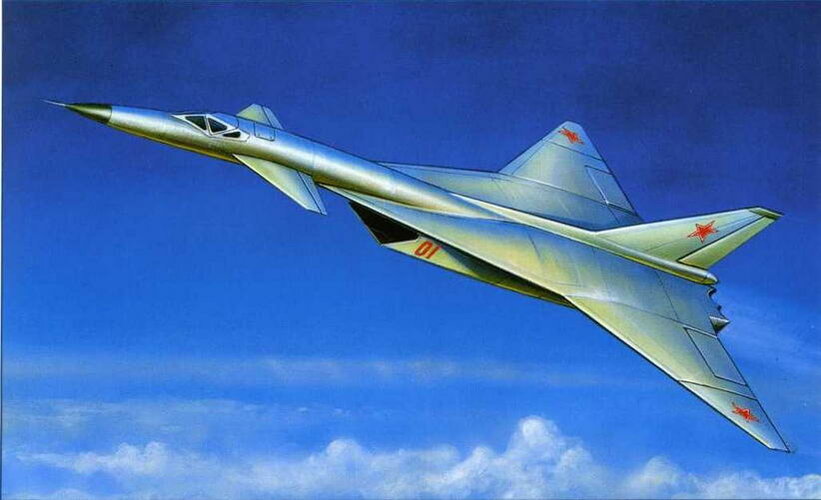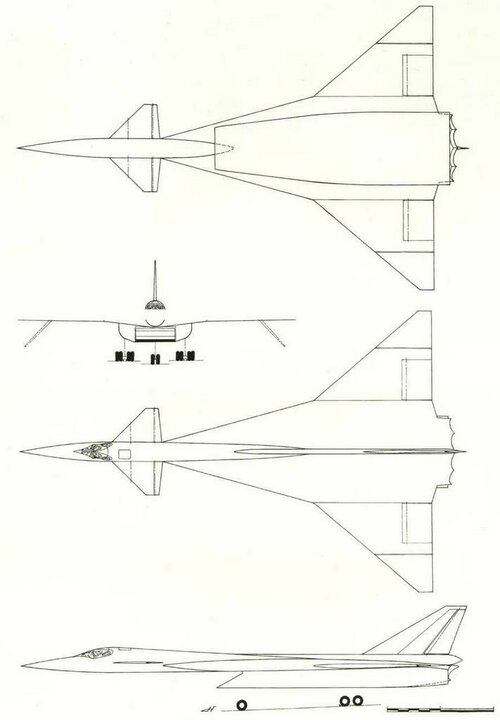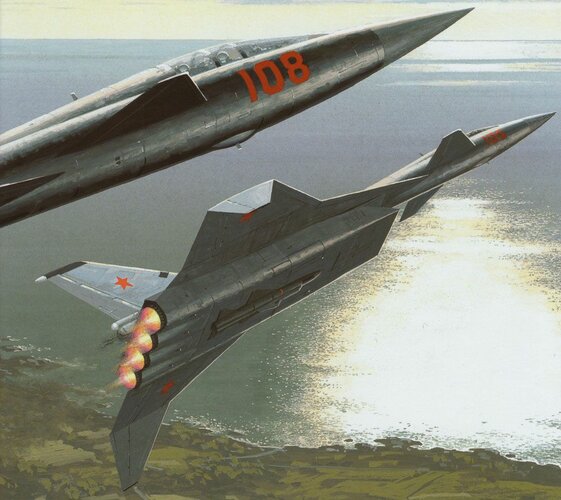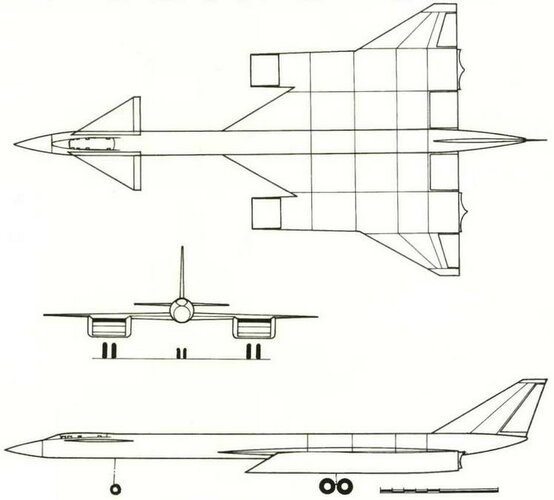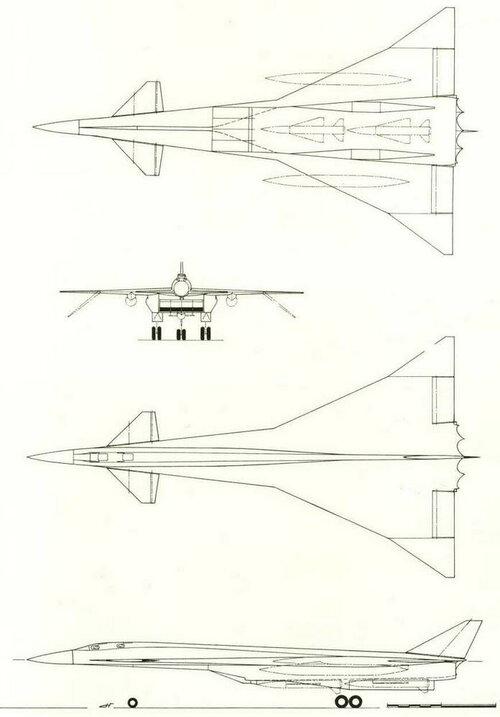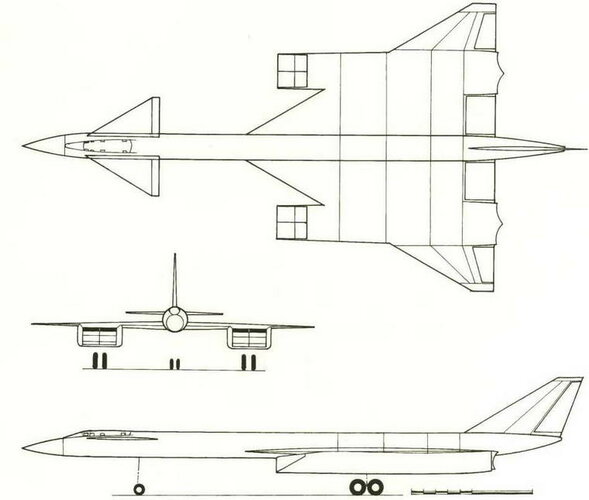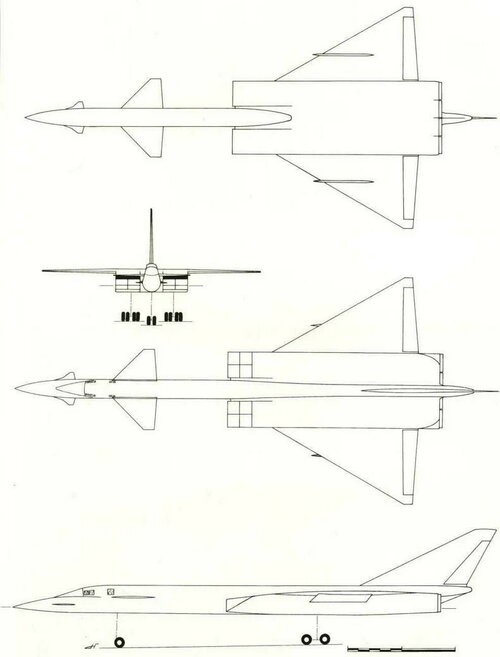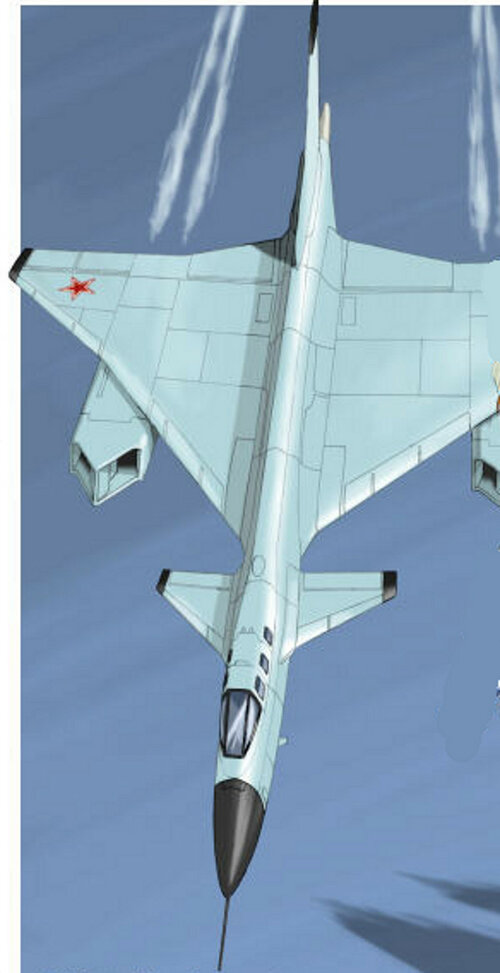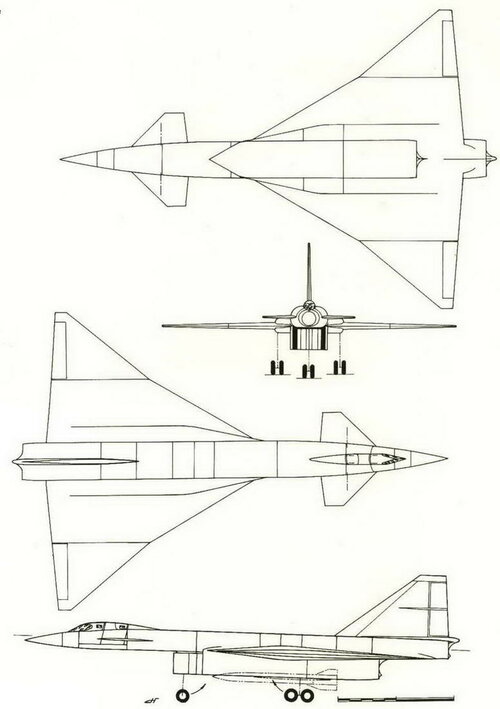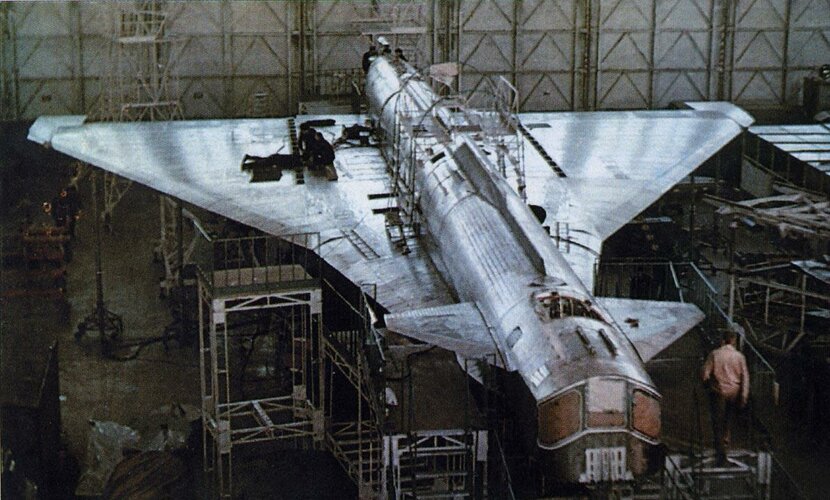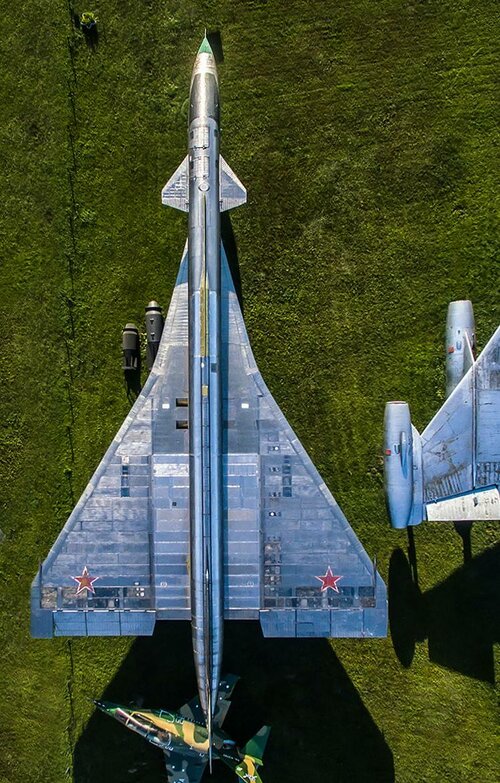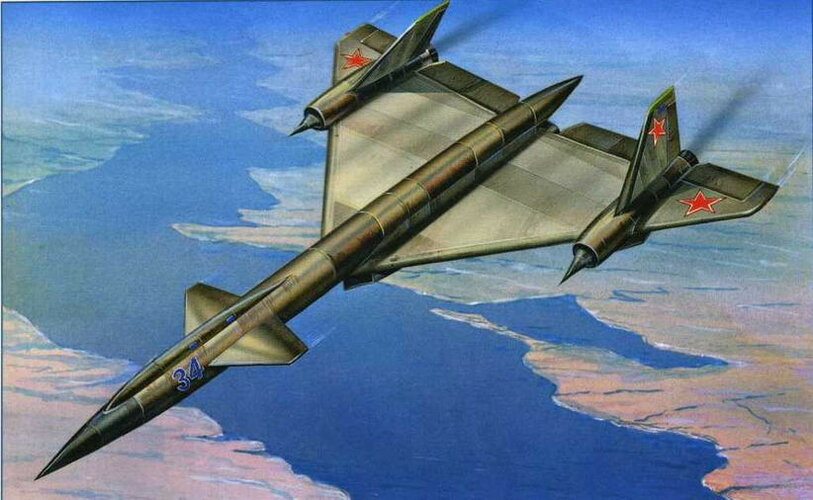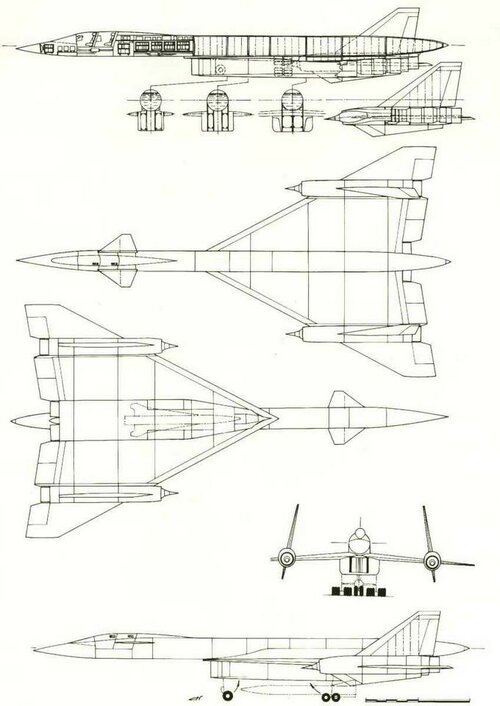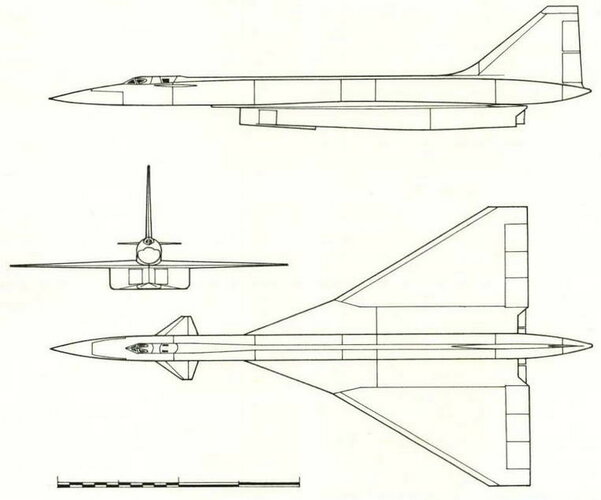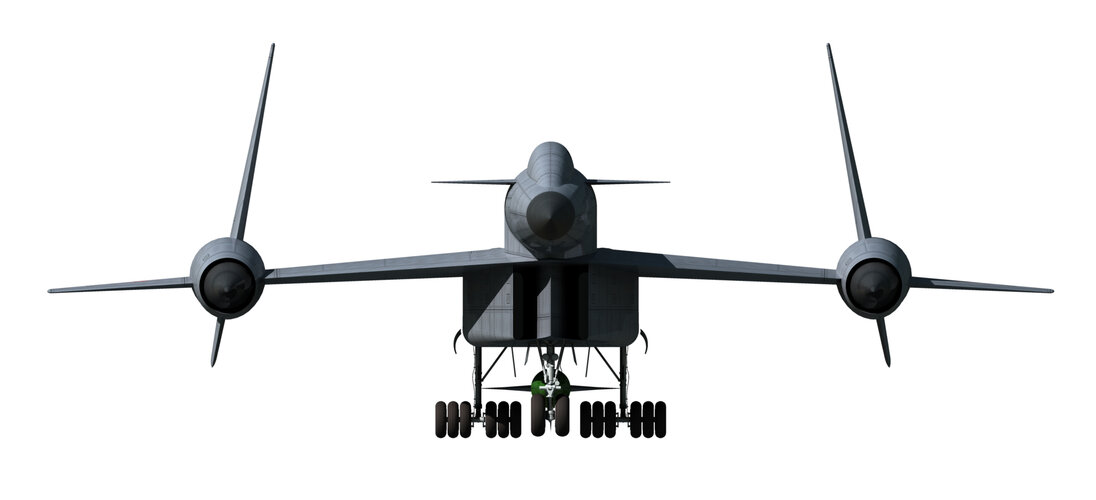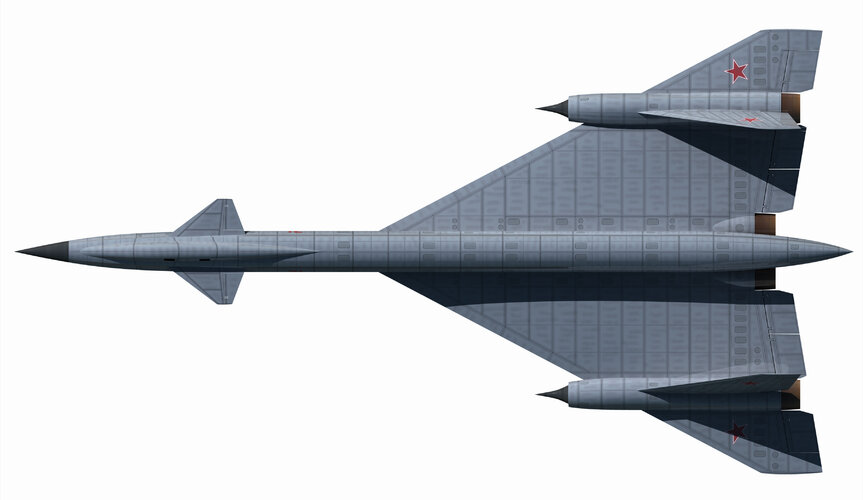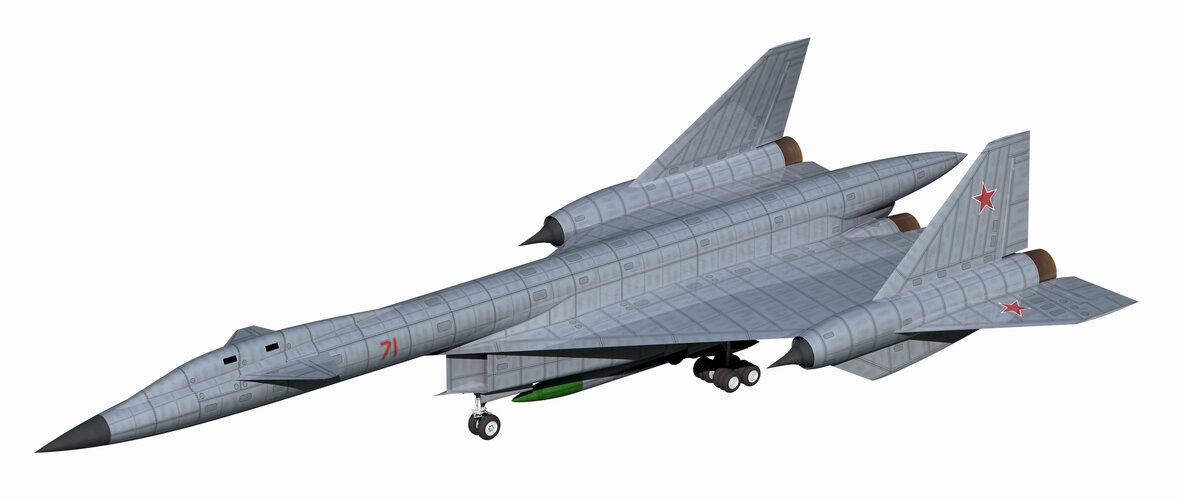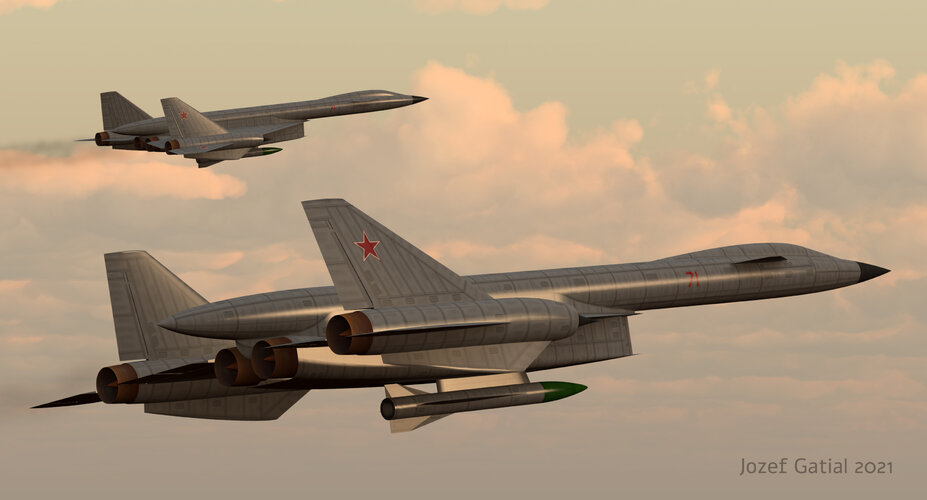You are using an out of date browser. It may not display this or other websites correctly.
You should upgrade or use an alternative browser.
You should upgrade or use an alternative browser.
Sukhoi T-4/T-4M/T-4MS bombers
- Thread starter elider
- Start date
Johnbr
ACCESS: Top Secret
- Joined
- 6 May 2007
- Messages
- 753
- Reaction score
- 329
Description
Developer OKB P.O.
Designation T-4MS
Code name "200"
Type of Supersonic intercontinental bomber
Crew 3
Stages of development 1973-74 1976-77
Geometric and mass characteristics
Aircraft length, m 41.2 (41.7) 41.2
Airplane height, m eight eight
Swipe, m center section 14.4 14.4
wing (angle of sweep 30 o ) 40,8 40,8
Wing area (sweep angle 30 o ), m 2 97.5 97.5
Maximum take-off weight, kg 170000 170000
Power point
Number of engines four four
Engine TRDF RD-36-41 TDRD NK-101
Engine thrust, kgf 16,000 20,000
Flight data (estimated)
Cruising range at normal combat load without refueling in flight, km at a speed of 900 km / h 11,000 14,000
at a speed of 3000 km / h 7500 9000
Maximum flight speed, km / h on high 3200 3200
on the ground 1100 1100
Practical ceiling, m 24,000 24,000
Runway length, m 1350 1100
Run length, m 950 950
Armament
UR "air-land" X-45 2-4
X-2000 24
Bomb load, kg normal 9000
maximum 45,000
Developer OKB P.O.
Designation T-4MS
Code name "200"
Type of Supersonic intercontinental bomber
Crew 3
Stages of development 1973-74 1976-77
Geometric and mass characteristics
Aircraft length, m 41.2 (41.7) 41.2
Airplane height, m eight eight
Swipe, m center section 14.4 14.4
wing (angle of sweep 30 o ) 40,8 40,8
Wing area (sweep angle 30 o ), m 2 97.5 97.5
Maximum take-off weight, kg 170000 170000
Power point
Number of engines four four
Engine TRDF RD-36-41 TDRD NK-101
Engine thrust, kgf 16,000 20,000
Flight data (estimated)
Cruising range at normal combat load without refueling in flight, km at a speed of 900 km / h 11,000 14,000
at a speed of 3000 km / h 7500 9000
Maximum flight speed, km / h on high 3200 3200
on the ground 1100 1100
Practical ceiling, m 24,000 24,000
Runway length, m 1350 1100
Run length, m 950 950
Armament
UR "air-land" X-45 2-4
X-2000 24
Bomb load, kg normal 9000
maximum 45,000
Attachments
Vasily41
ACCESS: Confidential
- Joined
- 5 August 2019
- Messages
- 90
- Reaction score
- 111
Two-seat heavy interceptor T-4P with "Smerch-100" or "Barrier" radar units for suspension of a maximum of eight or six K-100 missiles respectively.
Three special containers were placed under the wings and fuselage. Two missiles were carried in the wing container. The central container was developed in versions of two missiles or four missiles. Once a target had been located, each front missile would fold out from beneath the container with the help of a parallelogram-shaped launcher. Upon launch of the missile, the launcher would retract, and the rearward missile would fold out on its own launcher until it too was released. Each K-100 had a fuse delay of 3-4 seconds to prevent collision with the aircraft. Work on the T-4P ceased entirely when the T-4 program was suspended.
Takeoff Weight - 101,350 kg (223,439 lbs)
Fuel Mass - 53,000 kg (116,845 lbs)
Maximum Speed - 3,300 km/h (2,051 mph - Mach 2.7)
Cruising Speed - 3,000-3,200 km/h (1,864-1,988 mph - Mach 2.4-2.6)
Service Ceiling - 21,000-25,000 m (68,898-82,021 ft)
Armament Options - 8x K-100, 6x K-100, or 4x K-100 and one drop tank.
From testpilot.ru/rossiya/su/t-4p/ and airwar.ru/weapon/avv/k100
Three special containers were placed under the wings and fuselage. Two missiles were carried in the wing container. The central container was developed in versions of two missiles or four missiles. Once a target had been located, each front missile would fold out from beneath the container with the help of a parallelogram-shaped launcher. Upon launch of the missile, the launcher would retract, and the rearward missile would fold out on its own launcher until it too was released. Each K-100 had a fuse delay of 3-4 seconds to prevent collision with the aircraft. Work on the T-4P ceased entirely when the T-4 program was suspended.
Takeoff Weight - 101,350 kg (223,439 lbs)
Fuel Mass - 53,000 kg (116,845 lbs)
Maximum Speed - 3,300 km/h (2,051 mph - Mach 2.7)
Cruising Speed - 3,000-3,200 km/h (1,864-1,988 mph - Mach 2.4-2.6)
Service Ceiling - 21,000-25,000 m (68,898-82,021 ft)
Armament Options - 8x K-100, 6x K-100, or 4x K-100 and one drop tank.
From testpilot.ru/rossiya/su/t-4p/ and airwar.ru/weapon/avv/k100
Attachments
Last edited:
topspeed3
ACCESS: Secret
- Joined
- 31 January 2011
- Messages
- 329
- Reaction score
- 116
Description
Developer OKB P.O.
Designation T-4MS
Code name "200"
Type of Supersonic intercontinental bomber
Crew 3
Stages of development 1973-74 1976-77
Geometric and mass characteristics
Aircraft length, m 41.2 (41.7) 41.2
Airplane height, m eight eight
Swipe, m center section 14.4 14.4
wing (angle of sweep 30 o ) 40,8 40,8
Wing area (sweep angle 30 o ), m 2 97.5 97.5
Maximum take-off weight, kg 170000 170000
Power point
Number of engines four four
Engine TRDF RD-36-41 TDRD NK-101
Engine thrust, kgf 16,000 20,000
Flight data (estimated)
Cruising range at normal combat load without refueling in flight, km at a speed of 900 km / h 11,000 14,000
at a speed of 3000 km / h 7500 9000
Maximum flight speed, km / h on high 3200 3200
on the ground 1100 1100
Practical ceiling, m 24,000 24,000
Runway length, m 1350 1100
Run length, m 950 950
Armament
UR "air-land" X-45 2-4
X-2000 24
Bomb load, kg normal 9000
maximum 45,000
This is quite a beast !
More architecture than on the Winter palace and more ordnance than in a small nation.
It is almost faster than a missile.
- Joined
- 13 May 2006
- Messages
- 1,039
- Reaction score
- 951
- Joined
- 13 May 2006
- Messages
- 1,039
- Reaction score
- 951
- Joined
- 13 May 2006
- Messages
- 1,039
- Reaction score
- 951
topspeed3
ACCESS: Secret
- Joined
- 31 January 2011
- Messages
- 329
- Reaction score
- 116
athpilot
Fly me to the moon...
- Joined
- 18 November 2012
- Messages
- 412
- Reaction score
- 453
- Joined
- 1 April 2006
- Messages
- 11,394
- Reaction score
- 10,302
Of course not. And Kinzhal is not "Kh-47M2"
Vasily41
ACCESS: Confidential
- Joined
- 5 August 2019
- Messages
- 90
- Reaction score
- 111
- Joined
- 9 October 2009
- Messages
- 21,976
- Reaction score
- 13,636
A mock up/ground simulator you mean?
Vasily41
ACCESS: Confidential
- Joined
- 5 August 2019
- Messages
- 90
- Reaction score
- 111
Oh yes probably. I’m guessing those would be flaps and trim?A mock up/ground simulator you mean?
- Joined
- 9 October 2009
- Messages
- 21,976
- Reaction score
- 13,636
That would be a reasonable guess.
- Joined
- 3 June 2006
- Messages
- 3,094
- Reaction score
- 3,964
A mockup of a T-4 bomber with Kh-30 missiles (1966).
Edit:
Other sources:
 flibusta.site
flibusta.site
Edit:
Other sources:
Мир Авиации 2001 02 (fb2) | Флибуста
Last edited:
Next pictures
It just dawned on me - that shape is a bit similar to the FDL-5 lifting bodies with the "switch blades" VG wings. An interesting atempt at getting optimal high-speed aerodynamics with acceptable low-speed handling characteristics...
Vasily41
ACCESS: Confidential
- Joined
- 5 August 2019
- Messages
- 90
- Reaction score
- 111
From the chart PlanePictures attached in Post #30 of Feb 7, 2017, I can make out which designs you attached dear Hesham.
1.png - This one was confusing as the stated year aligned with Design #10, but the nacelles on the chart suggested intakes that were raked back. To my surprise our dear Blackkite shared a drawing to #10 in Post #38 of Jul 17, 2017. The only other design that would then match up is #1, even though the year of it is 1960 on the chart.
3.png - Narrowed down to Design #18. It is very similar to Design #19, but upon zooming in, one can see that the latter has a wider fuselage and where the cockpit flushes with it. I can further illustrating this as our dear Blackkite shared a drawing of #19 (miss-identified as #18) in his Post #38.
4.png - The very famous final T-4 product. Easily Design #46.
1.png - This one was confusing as the stated year aligned with Design #10, but the nacelles on the chart suggested intakes that were raked back. To my surprise our dear Blackkite shared a drawing to #10 in Post #38 of Jul 17, 2017. The only other design that would then match up is #1, even though the year of it is 1960 on the chart.
3.png - Narrowed down to Design #18. It is very similar to Design #19, but upon zooming in, one can see that the latter has a wider fuselage and where the cockpit flushes with it. I can further illustrating this as our dear Blackkite shared a drawing of #19 (miss-identified as #18) in his Post #38.
4.png - The very famous final T-4 product. Easily Design #46.
Attachments
blackkite
Don't laugh, don't cry, don't even curse, but.....
- Joined
- 31 May 2007
- Messages
- 8,819
- Reaction score
- 7,716
Su-9 '61 Blue' (c/n 100000610) was converted into the 100L aerodynamic research aircraft for testing possible wing designs for the T-4 missile strike aircraft. This is the first configuration designated 100L-1. (Scale unit : meter)
Source : RED STAR VOLUME 16 Sukhoi Interceptors, The Su-9/-11/-15 and oter types
Source : RED STAR VOLUME 16 Sukhoi Interceptors, The Su-9/-11/-15 and oter types
Attachments
blackkite
Don't laugh, don't cry, don't even curse, but.....
- Joined
- 31 May 2007
- Messages
- 8,819
- Reaction score
- 7,716
blackkite
Don't laugh, don't cry, don't even curse, but.....
- Joined
- 31 May 2007
- Messages
- 8,819
- Reaction score
- 7,716
Sukhoi 100L-2M, equipped to study ojival configuration wings for the Sukhoi T-4 trisonic bomber. The right wing extradome is covered by tufts of wool for flow visualization.
https://www.zona-militar.com/2018/1...hoi-su-9-y-su-11-los-defensores-de-la-rodina/
https://www.zona-militar.com/2018/1...hoi-su-9-y-su-11-los-defensores-de-la-rodina/
Attachments
blackkite
Don't laugh, don't cry, don't even curse, but.....
- Joined
- 31 May 2007
- Messages
- 8,819
- Reaction score
- 7,716
Another prototype in flight almost in parallel was the T-5, a T-3 equipped with two Tumansky R-11F-300 turbojets, which were located side by side and were powered by a single axisimetric nose air intake. The first flight, with Vladimir Ilyushin at the controls, was on July 18, 1958. On test flights the aircraft proved overpowered and could reach higher speeds than the post-combustion T-3. However, the R-11F-300s were designed to maintain sustained speeds below Mach 2 and a number of problems that caused the power plant and its installation, coupled with the unacceptablely low longitudinal stability of the T-5 advised cancelling the project in 1959.
Attachments
blackkite
Don't laugh, don't cry, don't even curse, but.....
- Joined
- 31 May 2007
- Messages
- 8,819
- Reaction score
- 7,716
- Joined
- 15 July 2007
- Messages
- 4,888
- Reaction score
- 4,552
How big was the avionics package for that FBW System?The Su-7LL with canards was the '100LDU', it was used as a testbed for the T-4's FBW system.
Not a lot of room in that plane.
Vasily41
ACCESS: Confidential
- Joined
- 5 August 2019
- Messages
- 90
- Reaction score
- 111
Another prototype in flight almost in parallel was the T-5, a T-3 equipped with two Tumansky R-11F-300 turbojets, which were located side by side and were powered by a single axisimetric nose air intake. The first flight, with Vladimir Ilyushin at the controls, was on July 18, 1958. On test flights the aircraft proved overpowered and could reach higher speeds than the post-combustion T-3. However, the R-11F-300s were designed to maintain sustained speeds below Mach 2 and a number of problems that caused the power plant and its installation, coupled with the unacceptablely low longitudinal stability of the T-5 advised cancelling the project in 1959.
I really don’t think the T-5 belongs in this thread as it was not related to the T-4 program. It was primarily designed as an alternative power plant testbed.
blackkite
Don't laugh, don't cry, don't even curse, but.....
- Joined
- 31 May 2007
- Messages
- 8,819
- Reaction score
- 7,716
Sorry. Of course it's my simple mistake.
Please enjoy T-4 pictures and drawings.
https://www.avsim.su/forum/topic/108743-т-4-сотка-или-су-100/
https://www.airplane-pictures.net/type.php?p=2617
Please enjoy T-4 pictures and drawings.
https://www.avsim.su/forum/topic/108743-т-4-сотка-или-су-100/
https://www.airplane-pictures.net/type.php?p=2617
Attachments
-
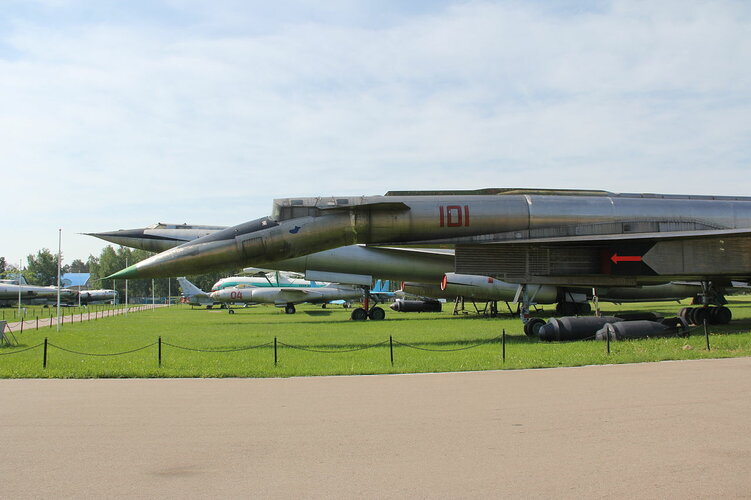 1280px-Sukhoi_T-4_(8911715751)_(2).jpg130 KB · Views: 226
1280px-Sukhoi_T-4_(8911715751)_(2).jpg130 KB · Views: 226 -
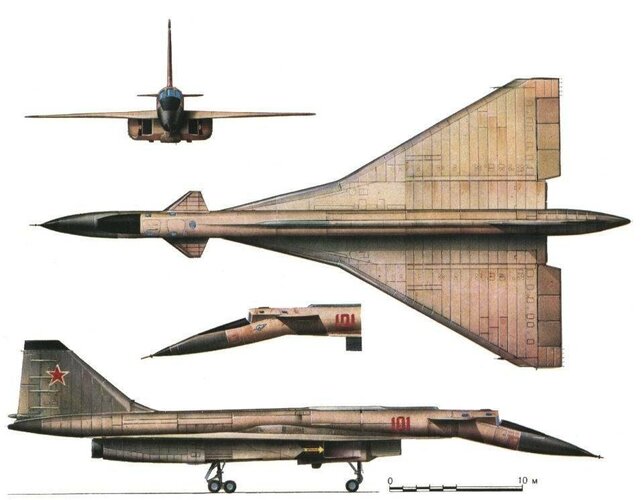 1369359382_t4_05_shema.jpg59.7 KB · Views: 254
1369359382_t4_05_shema.jpg59.7 KB · Views: 254 -
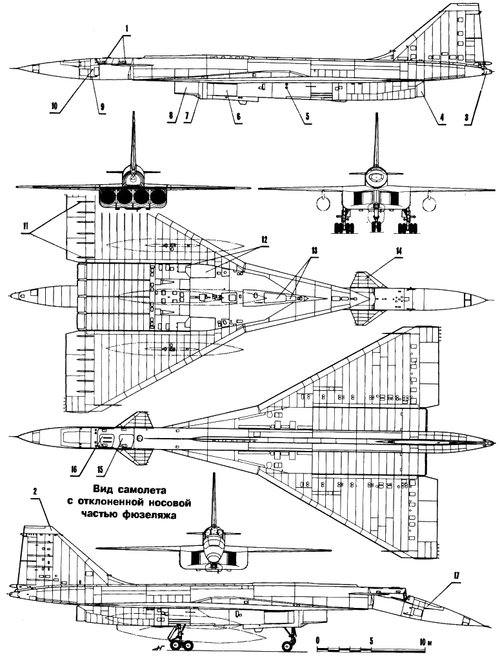 1369359623_1995-11-40.gif167.3 KB · Views: 293
1369359623_1995-11-40.gif167.3 KB · Views: 293 -
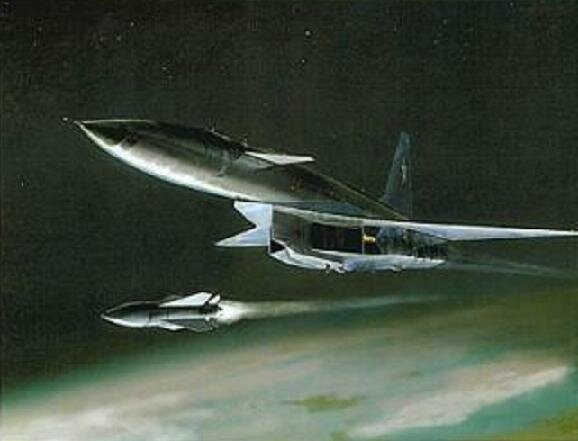 post-1757-029744500%201287739402.jpg25.2 KB · Views: 285
post-1757-029744500%201287739402.jpg25.2 KB · Views: 285 -
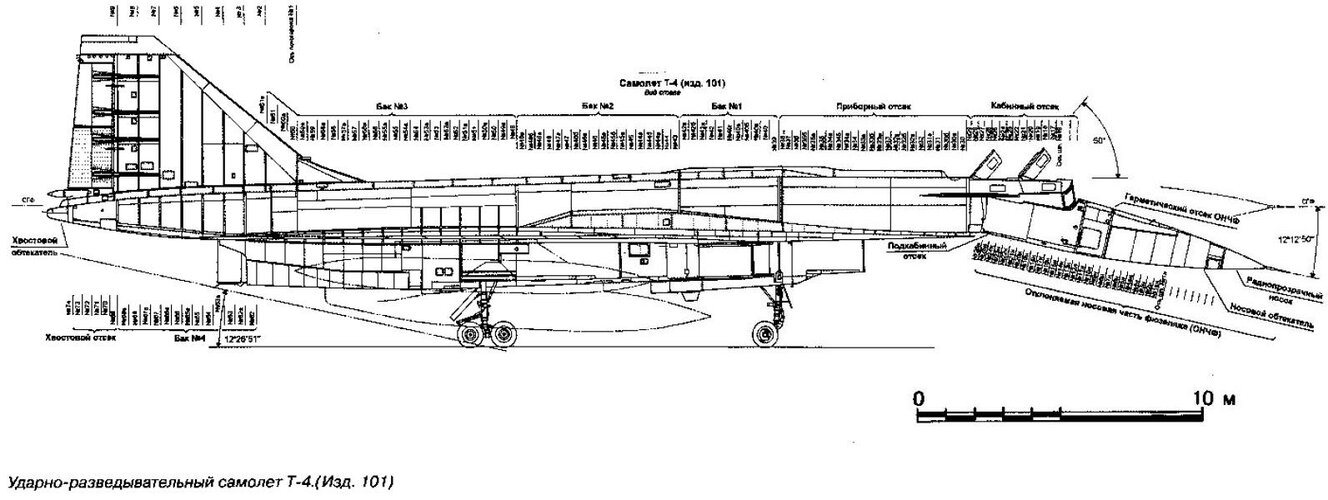 post-1757-057247600%201287734094.jpg141.8 KB · Views: 302
post-1757-057247600%201287734094.jpg141.8 KB · Views: 302 -
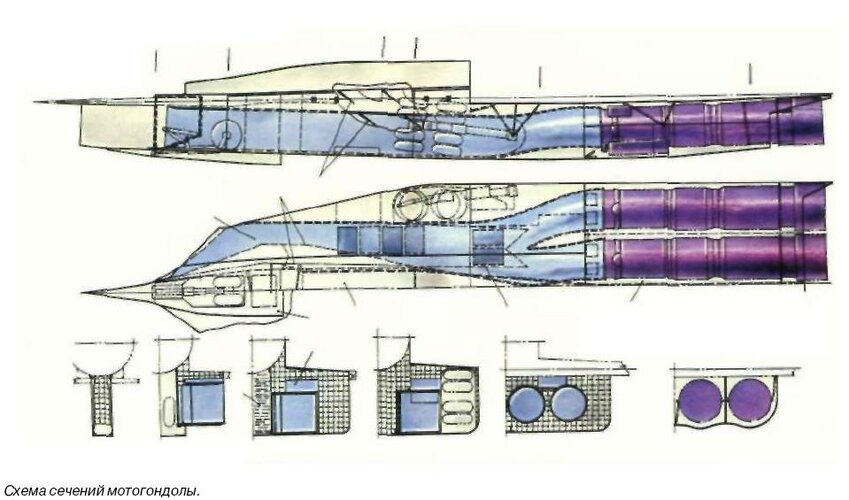 post-1757-081817400%201288229066.jpg71.6 KB · Views: 291
post-1757-081817400%201288229066.jpg71.6 KB · Views: 291 -
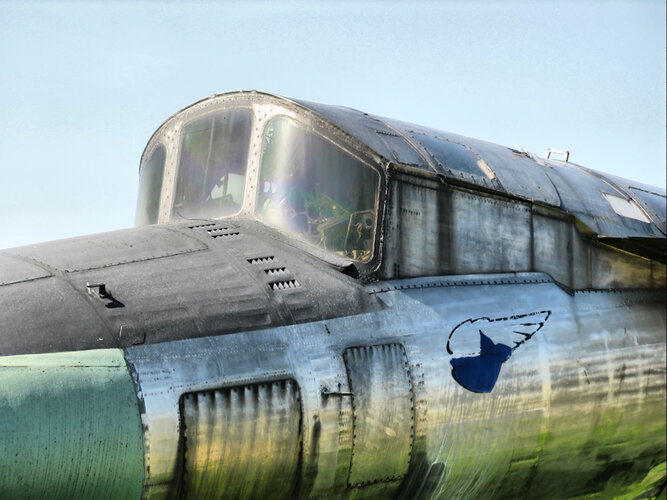 post-21409-049640500%201287779833.jpg348.9 KB · Views: 277
post-21409-049640500%201287779833.jpg348.9 KB · Views: 277 -
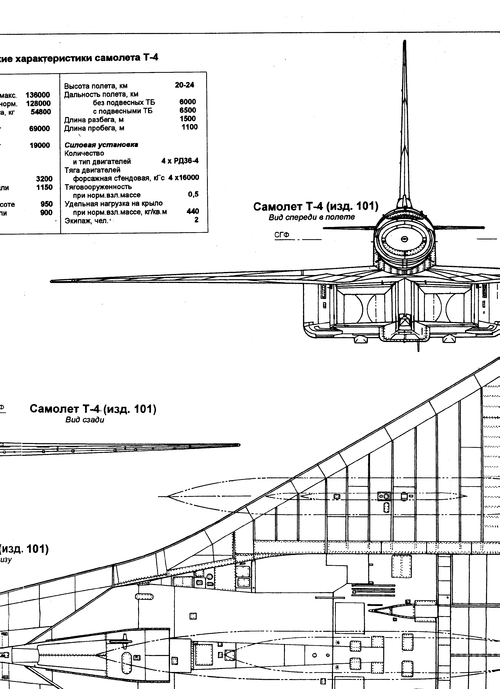 post-85452-0-24265500-1370209542.png102.5 KB · Views: 266
post-85452-0-24265500-1370209542.png102.5 KB · Views: 266 -
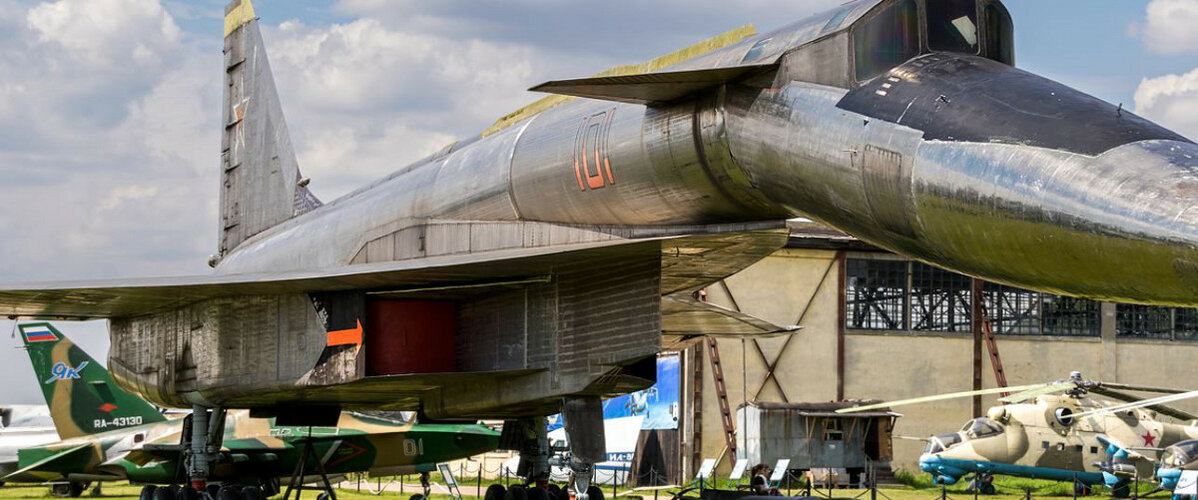 T-4 pic2.JPG185.7 KB · Views: 240
T-4 pic2.JPG185.7 KB · Views: 240 -
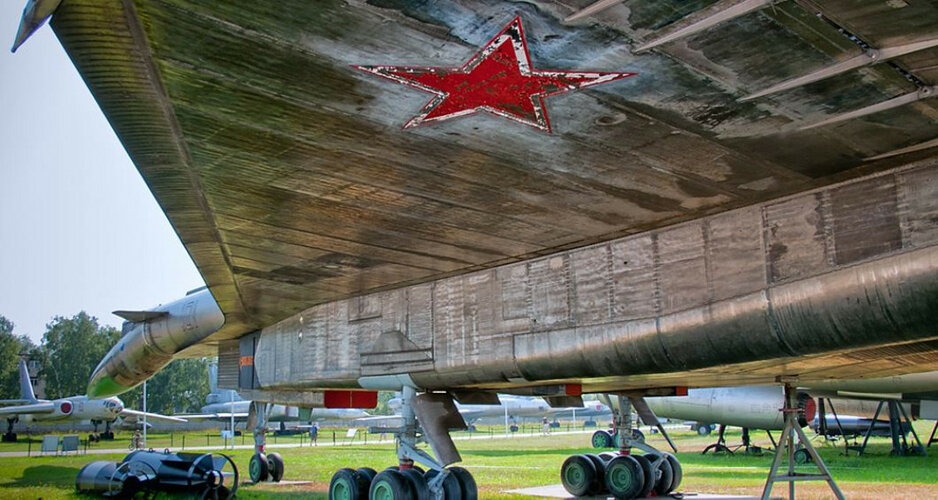 T-4 pic1.JPG236.4 KB · Views: 277
T-4 pic1.JPG236.4 KB · Views: 277
Last edited:
blackkite
Don't laugh, don't cry, don't even curse, but.....
- Joined
- 31 May 2007
- Messages
- 8,819
- Reaction score
- 7,716
blackkite
Don't laugh, don't cry, don't even curse, but.....
- Joined
- 31 May 2007
- Messages
- 8,819
- Reaction score
- 7,716
Hi!
Full scale mockup of the T-4 at the Koulon factory in 1967.
http://www.krasnayazvezda.com/air/appareils/bombardiers/t4.php
" In December 1965, a new decree of the Council of Ministers of the USSR gave the green light to the construction of the prototypes at the TMZ plant in Touchino. The first sections of the first flying prototype of the T-4, marked "101", were completed in 1969. The static test cell, called "100S", was completed in 1972. The prototype "101" was sent to Zhuovskiy's field on 30 December 1971, but the number of scheduled ground tests was substantial, so that the first flight did not take place until 22 August 1972. The aircraft was flown by Vladimir Ilyushin, assisted by navigator Nikolai Alfiorov.
In total, the prototype "101" carried out only 10 flights. During the first 5, the train was not retracted, and the speed was gradually increased to Mach 1.28 on Flight 9 on August 8, 1973. At the end of its last flight on 22 January 1974, the prototype "101" had only 10 hours and 20 minutes of flight time. No serious problems were revealed during the tests. The most important modification was the addition of a steel heat shield to protect the tank at the rear of the fuselage.
In addition to the "101", the T-4 program provided for the construction of five other prototypes at the TMZ plant:
 the "102", the structure of which included more composite materials, was to be used for testing the attack and navigation system;
the "102", the structure of which included more composite materials, was to be used for testing the attack and navigation system;
 The "103" and "104" were to serve as test platforms for the missile and for determining the range;
The "103" and "104" were to serve as test platforms for the missile and for determining the range;
 the "105" was supposed to allow the integration of avionics;
the "105" was supposed to allow the integration of avionics;
 and the "106" was to allow the development of strategic reconnaissance systems.
and the "106" was to allow the development of strategic reconnaissance systems.
The VVS acquisition plan for 1970-75 called for the construction of 250 T-4s, which were to be produced at the Kazan plant. But at the same time, the Air Force wanted to equip its fighter regiments with the new MiG-23s. The Minister of Aerospace Industry, Piotr Dementiev, told the commander of the VVS, Field Marshal Andrei Gretchko, that the MiG command could only be honoured if the T-4 was abandoned. At the same time, Andrei Tupolev suggested that Gretchko opt for a modernized version of the Tu-22, the Tu-22M (which was in fact an entirely new aircraft), instead of the T-4. These two elements signalled the abandonment of the Sukhai T-4, whose development was officially cancelled in 1974."
The prototypes "103" to "106" were scrapped, while the "102", completed in 1973 and about to fly, was sent to the MAI for student instruction before being scrapped. Finally, the prototype "101" was donated to the Monino Museum in 1982, where it is still kept.
Full scale mockup of the T-4 at the Koulon factory in 1967.
http://www.krasnayazvezda.com/air/appareils/bombardiers/t4.php
" In December 1965, a new decree of the Council of Ministers of the USSR gave the green light to the construction of the prototypes at the TMZ plant in Touchino. The first sections of the first flying prototype of the T-4, marked "101", were completed in 1969. The static test cell, called "100S", was completed in 1972. The prototype "101" was sent to Zhuovskiy's field on 30 December 1971, but the number of scheduled ground tests was substantial, so that the first flight did not take place until 22 August 1972. The aircraft was flown by Vladimir Ilyushin, assisted by navigator Nikolai Alfiorov.
In total, the prototype "101" carried out only 10 flights. During the first 5, the train was not retracted, and the speed was gradually increased to Mach 1.28 on Flight 9 on August 8, 1973. At the end of its last flight on 22 January 1974, the prototype "101" had only 10 hours and 20 minutes of flight time. No serious problems were revealed during the tests. The most important modification was the addition of a steel heat shield to protect the tank at the rear of the fuselage.
In addition to the "101", the T-4 program provided for the construction of five other prototypes at the TMZ plant:
The VVS acquisition plan for 1970-75 called for the construction of 250 T-4s, which were to be produced at the Kazan plant. But at the same time, the Air Force wanted to equip its fighter regiments with the new MiG-23s. The Minister of Aerospace Industry, Piotr Dementiev, told the commander of the VVS, Field Marshal Andrei Gretchko, that the MiG command could only be honoured if the T-4 was abandoned. At the same time, Andrei Tupolev suggested that Gretchko opt for a modernized version of the Tu-22, the Tu-22M (which was in fact an entirely new aircraft), instead of the T-4. These two elements signalled the abandonment of the Sukhai T-4, whose development was officially cancelled in 1974."
The prototypes "103" to "106" were scrapped, while the "102", completed in 1973 and about to fly, was sent to the MAI for student instruction before being scrapped. Finally, the prototype "101" was donated to the Monino Museum in 1982, where it is still kept.
Attachments
Last edited:
blackkite
Don't laugh, don't cry, don't even curse, but.....
- Joined
- 31 May 2007
- Messages
- 8,819
- Reaction score
- 7,716
Hi! T-4 (I-2) design in April 1961.
Source : УДАРНО-РАЗВЕДЫВАТЕЛЬНЫЙ САМОЛЕТ T-4.
And Pin.
Source : УДАРНО-РАЗВЕДЫВАТЕЛЬНЫЙ САМОЛЕТ T-4.
And Pin.
Attachments
Last edited:
blackkite
Don't laugh, don't cry, don't even curse, but.....
- Joined
- 31 May 2007
- Messages
- 8,819
- Reaction score
- 7,716
Attachments
Last edited:
blackkite
Don't laugh, don't cry, don't even curse, but.....
- Joined
- 31 May 2007
- Messages
- 8,819
- Reaction score
- 7,716
Hi! T-4 design in 1963.
https://www.secretprojects.co.uk/attachments/3-png.642445/
https://www.secretprojects.co.uk/attachments/3-png.642445/
Attachments
Last edited:
blackkite
Don't laugh, don't cry, don't even curse, but.....
- Joined
- 31 May 2007
- Messages
- 8,819
- Reaction score
- 7,716
Vasily41
ACCESS: Confidential
- Joined
- 5 August 2019
- Messages
- 90
- Reaction score
- 111
Ah yes. The design quickly conceived from first experiences against the SR-71. At that time, it was assumed that it was a bomber, but further encounters with the aircraft revealed its true role of reconnaissance, thus making this proposal irrelevant.
- Joined
- 13 May 2006
- Messages
- 1,039
- Reaction score
- 951
foiling
ACCESS: Secret
- Joined
- 12 August 2007
- Messages
- 367
- Reaction score
- 137
Breath-taking artwork, as always.and last one
- Joined
- 13 May 2006
- Messages
- 1,039
- Reaction score
- 951
Similar threads
-
-
-
-
Soviet decoy missiles for bombers in Cold War (similar to the ADM-20 Quail) ??
- Started by Temistocle
- Replies: 15
-

